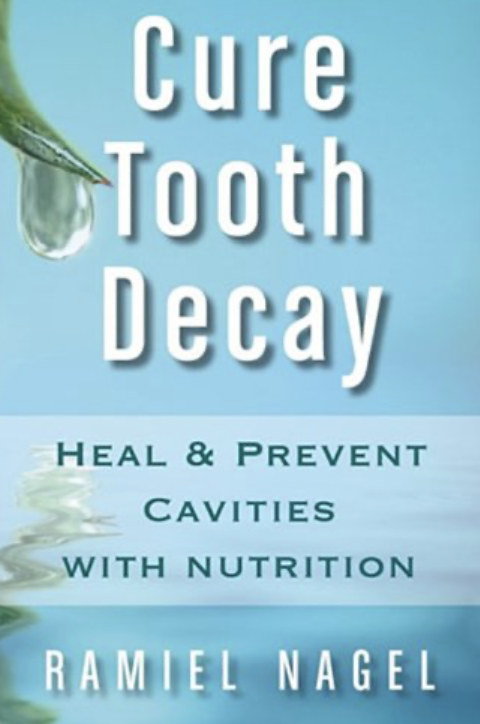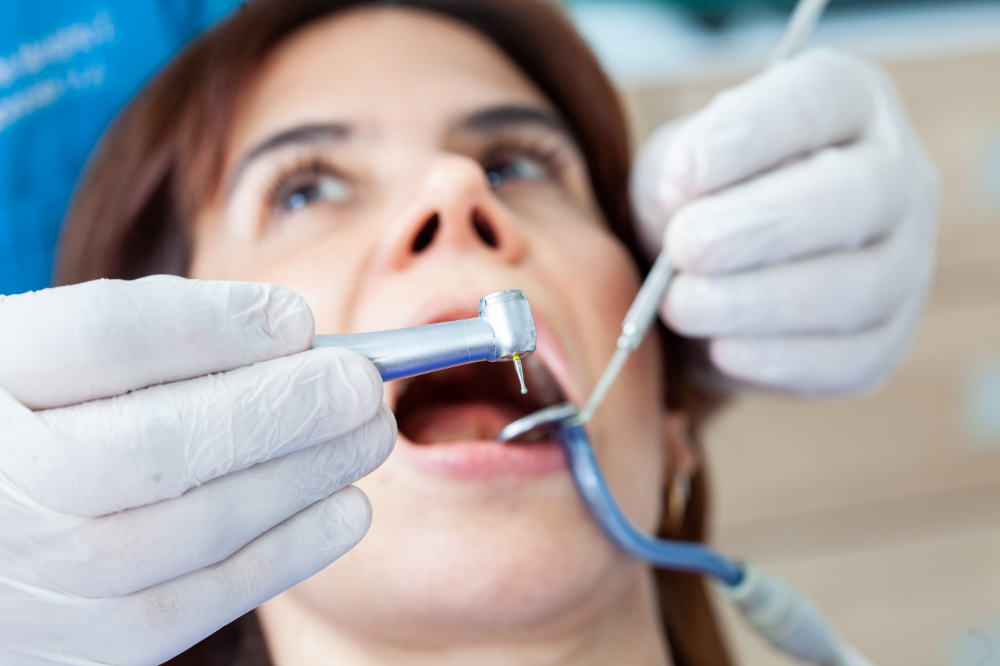We smile, we eat, we speak. All of these things are possible because of our teeth. But how do we avoid cavities and tooth pain so we can do these things into our advancing age? And who wants to go to the dentist?
You Need Your Teeth
Your teeth are important. They help you chew your food, speak clearly, and keep your smile looking its best. Nothing that is manmade is superior to the teeth your body gives you.
Implants have their own problems and if the bone they are inserted into is deteriorating…. well….
So why are your teeth giving you problems? You have seen some older people in your life who have all of their original teeth so it is possible. You have met people who into their golden years have managed to keep their natural teeth, so it is possible. But what is the problem with most people? There was a dentist during the last century who wondered about that very thing.
. In this article, we’ll explore the impact of diet on dental health, with a special focus on the research of Dr. Weston A. Price and the foods he found to keep teeth strong.
Weston A Price – a Wise Dentist Travels:
The Link Between Diet and Dental Health:
Dental health is a crucial aspect of overall well-being, Diet plays a pivotal role in maintaining healthy teeth and preventing cavities. The foods we consume can either fortify our teeth or contribute to their deterioration. The connection between diet and dental health has been a subject of interest for researchers, and one notable figure in this field is Dr. Weston A. Price. His work provided valuable insights into the connection between traditional diets and dental health.
Weston A. Price and His Findings:
Dr. Weston A. Price, a dentist and nutritionist, conducted groundbreaking research in the 1930s, studying the oral health of various populations around the world. His findings, detailed in his book “Nutrition and Physical Degeneration,” revealed a strong connection between diet and oral health.
Price discovered that indigenous populations with traditional diets tended to have excellent dental health, with minimal instances of cavities and tooth decay. On the contrary, those who adopted modern, processed diets experienced a surge in dental issues.
Background:
Dr. Weston Price, born in 1870, was a Canadian dentist who became concerned about the increasing prevalence of tooth decay and facial deformities in his patients. In the 1930s, he embarked on a global journey to study diverse populations with minimal exposure to modern processed foods. His research aimed to investigate the impact of diet on dental health and overall well-being.
Research Methodology:
Price’s research involved visiting various isolated and indigenous communities, ranging from Swiss villages to Eskimo settlements, and studying their diets, lifestyles, and dental health. He examined thousands of skulls and observed that these traditional societies exhibited remarkably low rates of tooth decay and few dental deformities compared to their modernized counterparts.
He found 2 brothers in Ireland had different facial structures. The first brother ate a traditional diet and his face was wide and he had no cavities. The brother who ate a modern diet had a narrow face, not enough room for all of his teeth, and many cavities. Dr Price took photographs of these and many other examples. Many people who ate traditional foods never brushed their teeth and had no cavities.
Think of how you could help your children, the next generation. No more need for extraction of wisdom teeth and no braces.

Key Findings:
1. Nutrient-Dense Diets:
Price found that traditional diets were rich in essential nutrients, including fat-soluble vitamins (A, D, and K), minerals, and other micronutrients. These diets, often based on locally available whole foods like fish, organ meats, dairy, and vegetables, seemed to contribute to optimal dental health.
2. Role of Fat-Soluble Vitamins:
The presence of fat-soluble vitamins, particularly vitamin D, played a crucial role in dental health. Price observed that populations with access to vitamin D through natural sources like fish liver oils exhibited better resistance to tooth decay.
3. Effect of Processed Foods:
In contrast, communities exposed to modern processed foods experienced a decline in dental health. Price noted an increase in tooth decay, malocclusions, and facial deformities among individuals who adopted diets high in refined sugars, white flour, and canned goods.
4. Generation-to-Generation Impact:
Price highlighted that the dental health of these traditional populations was consistently excellent across generations, emphasizing the intergenerational impact of diet on overall health and well-being.
Legacy and Criticisms:
Dr. Weston Price’s research laid the foundation for understanding the importance of nutrition in dental health. However, some aspects of his work have faced criticism for its observational nature and the lack of controlled experiments. Nevertheless, his emphasis on the role of nutrient-dense, traditional diets in maintaining optimal dental health has inspired subsequent research in the fields of nutrition and dentistry.
The Role of Nutrient-Dense Foods:
One of the key takeaways from Price’s research is the importance of nutrient-dense foods in promoting optimal dental health. Traditional diets, rich in vitamins and minerals, played a crucial role in maintaining strong teeth and preventing cavities.
What Should We Eat?
- Raw Dairy Products:
- Price found that communities consuming raw dairy products, such as raw milk and cheese, exhibited lower rates of cavities. These products are rich in calcium, phosphorus, and fat-soluble vitamins, all of which contribute to strong teeth.
- Organic and Pasture-Raised Meats:
- Lean meats, especially when sourced from pasture-raised animals, provide essential nutrients like vitamin D, which is crucial for calcium absorption and maintaining strong teeth.
- Organic Vegetables and Fruits:
- Colorful vegetables and fruits are packed with vitamins and minerals that support overall health, including oral health. Vitamin C, found in abundance in citrus fruits and bell peppers, is particularly important for gum health.
- Bone Broth:
- Homemade bone broth is a nutrient powerhouse, containing minerals like calcium, magnesium, and phosphorus. These minerals play a vital role in strengthening teeth and supporting the remineralization process.
- Fermented Foods:
- Fermented foods like sauerkraut, kimchi, and yogurt are rich in probiotics that promote a healthy balance of bacteria in the mouth. This balance is crucial for preventing the growth of harmful bacteria that contribute to cavities.
- Coconut Oil:
- Oil pulling with coconut oil is a traditional practice known for its oral health benefits. Coconut oil has antimicrobial properties that can help fight bacteria in the mouth, reducing the risk of cavities.
- Nuts and Seeds:
- Almonds, sesame seeds, and other nuts and seeds are excellent sources of minerals like calcium and phosphorus, contributing to the strength of teeth.
- Whole Grains:
- Whole grains, such as brown rice and quinoa, provide essential nutrients like magnesium and vitamin B, supporting overall oral health.

Basic Things We Should Eat to Make Teeth Strong:
Eggs – Free Range –
Eggs from free-range hens are widely considered a superior choice for several health and ethical reasons. Hens that are free-range have the opportunity to engage in natural behaviors, including foraging for insects and plants, resulting in a more varied and nutrient-rich diet. This natural diet contributes to eggs with a potentially enhanced nutritional profile, often containing higher levels of omega-3 fatty acids, vitamin D, and antioxidants. Free-range eggs are also associated with a more humane and ethical approach to farming, as hens have access to outdoor spaces and can express their natural behaviors. This contrasts with conventional caged systems, and supporting free-range egg production aligns with concerns for animal welfare. The combination of potential health benefits and ethical considerations makes eggs from free-range hens an appealing choice for those looking to make conscious and health-conscious decisions about their food choices.
Butter –
Grass fed Butter from grass-fed cows is widely considered to be a healthier option for several reasons. Cows that graze on pasture consume a diet rich in nutrients, including omega-3 fatty acids and antioxidants. As a result, butter from grass-fed cows tends to have a more favorable nutrient profile compared to butter from conventionally raised cows. The increased levels of omega-3 fatty acids in grass-fed butter can contribute to better heart health, as these fats are known for their anti-inflammatory properties. Additionally, grass-fed butter is often higher in beneficial compounds like beta-carotene and vitamin K2, which play crucial roles in supporting immune function and bone health, respectively. The superior nutritional content of butter derived from grass-fed cows aligns with a growing awareness of the importance of the quality of fats in one’s diet and underscores the potential health benefits associated with choosing products from animals raised in more natural, pasture-based environments.
Liver
Consuming liver offers a myriad of health benefits, making it a nutrient-dense food that can contribute significantly to overall well-being. Liver is a rich source of essential nutrients such as iron, vitamin A, vitamin B12, folate, and copper. Iron from liver is highly bioavailable, making it particularly beneficial for individuals at risk of iron deficiency or anemia. Vitamin A in liver is crucial for vision, immune function, and skin health. Vitamin B12 is essential for neurological health and the formation of red blood cells. Folate is important for DNA synthesis and repair. Copper, another mineral found in liver, plays a role in the formation of connective tissues and supports iron metabolism. While liver is abundant in nutrients, moderation is key due to its high vitamin A content, and it is advisable for individuals to consult with healthcare professionals to ensure it fits well within their dietary needs. Overall, incorporating liver into the diet, in appropriate amounts, can be a valuable strategy for achieving optimal nutrient intake and promoting overall health.
Activator X
Activator X is a term coined by Dr. Weston A. Price, a dentist and nutrition researcher who conducted extensive studies on the diets of various traditional cultures in the early to mid-20th century. In his book “Nutrition and Physical Degeneration,” Price referred to Activator X as a fat-soluble vitamin-like substance that he found in certain traditional diets, particularly in the form of high-vitamin butter oil.
Price observed that populations with robust dental and overall health often consumed foods rich in Activator X. He found this substance to be prevalent in foods like organ meats, fish eggs, and the butterfat of cows grazing on nutrient-dense grass.
Years later, it was suggested that Activator X might be Vitamin K2, specifically the menaquinone-4 (MK-4) and menaquinone-7 (MK-7) forms. Vitamin K2 is known for its role in calcium metabolism, bone health, and cardiovascular health. It helps direct calcium to the bones and teeth while preventing its deposition in arteries and soft tissues.
While the link between Activator X and Vitamin K2 is widely accepted, it’s important to note that the term “Activator X” itself is more closely associated with Dr. Price’s observations and research than with a specific recognized nutrient. The understanding of the health benefits of Vitamin K2 has expanded since Dr. Price’s time, and research continues to explore its various roles in the body.
Bone Broth
Bone broth is often promoted for its potential health benefits, including its nutrient content that may contribute to overall well-being, but specific evidence linking it directly to dental health is limited.
Bone broth is made by simmering animal bones and connective tissues, typically with herbs, vegetables, and spices, for an extended period. During this process, various nutrients are released into the broth, including collagen, minerals (such as calcium and magnesium), and amino acids.
1. **Collagen for Oral Tissues:** Collagen, a protein found in bones and connective tissues, is a component of bone broth. Collagen is important for the integrity of various tissues, including the gums and other oral structures. However, more research is needed to establish a direct link between collagen from bone broth and specific improvements in dental health.
2. **Minerals for Bone Health:** Bone broth contains minerals like calcium and magnesium, which are essential for maintaining strong teeth and bones. Consuming foods rich in these minerals supports overall bone health, including that of the jaw and teeth.
3. **Gelatin and Amino Acids:** The gelatin derived from bone broth may contribute to gut health, and a healthy gut is often associated with better overall health, including dental health. Additionally, amino acids in bone broth could support tissue repair.
While these components suggest potential benefits, it’s important to note that scientific studies specifically addressing the impact of bone broth on dental health are limited. Dental health is multifaceted, involving factors such as oral hygiene practices, diet, and overall health.
If you enjoy bone broth and want to include it in your diet, it can be a nutritious addition. However, it’s crucial to maintain a well-balanced diet, practice good oral hygiene, and seek advice from dental professionals for personalized recommendations tailored to your specific oral health needs.
Things to Consider
Vitamin D from Sunlight
Vitamin D is crucial for dental health as it helps promote enamel growth and aids in the absorption of calcium, which is essential for strong teeth and bones. One of the best sources of vitamin D is sunlight. Spending a few minutes outdoors each day can help our bodies naturally produce this important vitamin. However, it can be challenging to get enough vitamin D from the sun alone, especially during the winter months or for those who live in areas with limited sunlight.
To ensure we are getting enough vitamin D for our dental care needs, we can also turn to dietary sources. Some foods rich in vitamin D include fatty fish like salmon and mackerel, egg yolks, and fortified dairy products. Including these foods in our diet can help support our dental health and overall well-being. And of course, there is always Cod Liver Oil!
Look for vitamin D3.
Omega-3 Fatty Acids for Healthy Teeth
Your teeth are important! They help you to chew your food, speak clearly, and give your face its shape. But did you know that what you eat can affect your teeth? It’s true! The right diet can help keep your teeth healthy and prevent problems like tooth decay and gum disease.
So what should you eat for healthy teeth? One important nutrient is omega-3 fatty acids. Omega-3 fatty acids are found in certain fish, like salmon, trout, and sardines, as well as in flaxseed and walnuts. These healthy fats have many benefits for your body, including reducing inflammation.
OUR MODERN DIETS CONTAIN TOO MUCH OMEGA 6 FATTY ACIDS
Inflammation is a major factor in gum disease, so eating foods that contain omega-3 fatty acids can help to protect your gums. Omega-3 fatty acids can also help to reduce plaque buildup on your teeth. Plaque is a sticky film of bacteria that forms on your teeth and gums. If it’s not removed, it can harden into tartar, which can lead to tooth decay and gum disease.
So if you want to keep your teeth healthy, be sure to include omega-3 fatty acids in your diet. You can find them in oily fish, flaxseed, and walnuts. Adding these healthy fats to your diet can help to reduce inflammation and protect your teeth from plaque and tartar.
Essential fatty acids (EFAs) are crucial for various physiological functions in the body, and they are termed “essential” because the body cannot produce them on its own. As a result, these fatty acids must be obtained through dietary sources. The two main types of essential fatty acids are omega-3 fatty acids and omega-6 fatty acids. Here are some key reasons why essential fatty acids are necessary for overall health:
Cell Structure and Function:
Essential fatty acids are fundamental components of cell membranes. They help maintain the integrity and fluidity of cell membranes, which is vital for proper cellular function, communication, and signaling.
Brain Health:
Omega-3 fatty acids, particularly docosahexaenoic acid (DHA), are essential for the development and function of the brain. They play a crucial role in cognitive function, memory, and overall brain health. DHA is especially important during prenatal and early childhood development.
Heart Health:
Omega-3 fatty acids, found in fatty fish, flaxseeds, and walnuts, have been linked to cardiovascular health. They can help lower blood pressure, reduce triglycerides, and decrease the risk of heart disease by promoting healthy cholesterol levels.
Inflammation Regulation:
Omega-3 fatty acids, in particular, have anti-inflammatory properties. They can help modulate the body’s inflammatory response, which is important for managing chronic inflammatory conditions and reducing the risk of inflammatory diseases.
Immune System Support:
Essential fatty acids play a role in supporting the immune system. They contribute to the production of signaling molecules involved in immune responses, helping the body defend against infections and diseases.
Skin Health:
EFAs are essential for maintaining healthy skin. They contribute to the formation of the skin’s lipid barrier, helping to retain moisture and protect against environmental factors. Deficiencies in essential fatty acids can result in dry, flaky skin.
Hormone Production:
Essential fatty acids are precursors to certain hormones, including those involved in regulating blood clotting, inflammation, and the contraction and relaxation of smooth muscles.
Vision:
DHA, an omega-3 fatty acid, is a major component of the retina in the eyes. Adequate intake of omega-3s supports visual development and helps maintain eye health.
To ensure sufficient intake of essential fatty acids, it’s important to include good dietary sources in your diet. Common sources include fatty fish (such as salmon and mackerel), flaxseeds, chia seeds, walnuts, and certain vegetable oils. Maintaining a balance between omega-3 and omega-6 fatty acids is also important for overall health.

Who is Ramiel Nagel?
Ramiel Nagel is an author known for his work on natural health, holistic dentistry, and traditional diets. He gained recognition for his book titled “Cure Tooth Decay: Heal and Prevent Cavities with Nutrition,” first published in 2010. In this book, Nagel discusses the relationship between nutrition and dental health, drawing on the principles of Dr. Weston A. Price, a dentist known for his research on the impact of diet on oral health.
In “Cure Tooth Decay,” Nagel challenges conventional dental wisdom and advocates for a diet rich in nutrient-dense foods to prevent and heal cavities. The book suggests that by addressing nutritional deficiencies and avoiding certain processed foods, individuals can support their dental health and potentially reverse tooth decay.
It’s important to note that while Nagel’s work has gained a following, his views are not universally accepted within the mainstream dental and medical communities. Traditional approaches to oral health, such as regular dental hygiene practices and professional dental care, remain widely recommended for maintaining optimal dental well-being.
The Ignorance of Modern Dentistry Practices and Societal Problems
WE SHOULD AVOID COMSUMPTION OF SUGARS AND PROCESSED FOODS:
Equally important to the inclusion of nutrient-dense foods is the avoidance of sugars and processed foods. Price’s research highlighted the detrimental effects of refined sugars on dental health. These sugars fuel the growth of harmful bacteria in the mouth, leading to cavities and decay. Also there is a negative effect. Foods need certain minerals and vitamins to digest the food. These foods subtract from the body stores to be digested.
Avoiding sugar and processed foods is essential for maintaining optimal health due to the numerous negative effects associated with their consumption. High sugar intake is linked to an increased risk of obesity, type 2 diabetes, and cardiovascular diseases. Processed foods often contain added sugars, unhealthy fats, and high levels of sodium, contributing to poor nutritional quality. Regular consumption of these foods can lead to energy imbalances, causing weight gain and disrupting metabolic health. Moreover, the rapid spikes and crashes in blood sugar levels from consuming sugary and processed foods may contribute to mood swings, fatigue, and cravings, negatively impacting overall well-being. A diet rich in whole, unprocessed foods, such as fruits, vegetables, lean proteins, and whole grains, provides essential nutrients while reducing the risk of chronic diseases. By making conscious choices to limit sugar and processed food intake, individuals can better support their long-term health, improve energy levels, and reduce the risk of various health issues.
Problems Associated with Mouthwash
Mouthwash, a common component of oral hygiene routines, is often touted for its ability to freshen breath, kill bacteria, and promote overall oral health. However, like many oral care products, mouthwash is not without its concerns. In this article, we’ll explore the problems associated with mouthwash, ranging from potential health risks to the environmental impact of its usage.
- Alcohol Content:
One of the primary concerns with many commercial mouthwashes is their high alcohol content. Alcohol, often present in formulations as ethanol, can contribute to dry mouth. Prolonged use of alcohol-based mouthwashes may lead to irritation, increased sensitivity, and an imbalance in the oral microbiome. - Disruption of the Oral Microbiome:
While mouthwash is designed to eliminate harmful bacteria, it does not discriminate between good and bad bacteria. Regular use of antibacterial mouthwashes can disrupt the natural balance of the oral microbiome, potentially leading to overgrowth of harmful bacteria and increased susceptibility to oral health issues. - Masking Underlying Issues:
Mouthwash, particularly those with strong flavors, can mask underlying dental issues such as gum disease, cavities, or infections. Relying solely on mouthwash for oral care may lead to a false sense of security, delaying necessary dental interventions. - Potential Health Risks:
Some studies suggest potential health risks associated with certain mouthwash ingredients, such as chlorhexidine. Prolonged use of certain formulations may be linked to an increased risk of oral cancer and other health issues. It is crucial for individuals to be aware of the ingredients in their mouthwash and seek guidance from dental professionals. - Alternatives and Natural Solutions:
Individuals concerned about the drawbacks of commercial mouthwashes may explore alternative and natural solutions. Oil pulling with coconut oil, using saline solutions, or opting for herbal-infused mouthwashes are alternatives that can be gentler on the oral microbiome.
As is stated above, mouthwash can kill all bacteria in the mouth including the bacteria that makes Nitric oxide. Why is Nitric Oxide beneficial?
Nitric oxide (NO) is a molecule that the body produces naturally, and it plays crucial roles in various physiological processes. It is a signaling molecule with widespread effects in the body. Some of its key functions include:
1. Vasodilation: Nitric oxide helps relax and widen blood vessels, promoting increased blood flow. This is essential for maintaining healthy blood pressure and ensuring proper circulation.
2. Neurotransmission: In the nervous system, nitric oxide acts as a neurotransmitter, facilitating communication between nerve cells.
3. Immune Response: Nitric oxide is involved in the immune response, helping the body defend against pathogens.
4. Inflammation Regulation: Nitric oxide plays a role in modulating inflammation, which is a crucial aspect of the body’s response to injury and infection.
5. Cellular Communication: It acts as a signaling molecule between cells, influencing various physiological processes.
Nitric oxide is a naturally occurring molecule in the body that serves important roles in vascular health, neurotransmission, immune function, and other physiological processes.
The Importance of Saliva in Dental Health: Your Built in Mouthwash
Saliva plays a crucial role in maintaining dental health. It is not just a liquid in our mouths; it is an essential component of our oral ecosystem. Saliva helps to neutralize acids, wash away food particles, and protect against harmful bacteria. Without sufficient saliva production, our teeth and gums can become more vulnerable to tooth decay, gum disease, and other oral health issues.
Chewing crunchy foods, such as fruits and vegetables, stimulates saliva production. The act of chewing triggers the salivary glands to produce more saliva, which can help wash away bacteria and plaque. Additionally, chewing sugarless gum can also stimulate saliva flow and aid in removing food particles from the mouth. It is important to note that sugarless gum is the key, as chewing gum with sugar can contribute to tooth decay.
“Saliva is like a natural mouthwash, continuously rinsing our mouths and protecting our teeth and gums.”
Saliva contains important enzymes that help break down food particles and aid in digestion. It also contains antibodies that can help prevent infections in the mouth. Furthermore, saliva helps to maintain a balance of minerals in our mouths, which is important for the remineralization of tooth enamel. When saliva production is insufficient, the risk of tooth decay and enamel erosion increases.
| Saliva Benefits | Summary |
| Neutralizes acids | Helps maintain a balanced pH level in the mouth, preventing tooth decay and erosion |
| Washes away food particles | Removes debris and prevents the buildup of plaque and bacteria |
| Protects against harmful bacteria | Aids in the prevention of gum disease and other oral infections |
| Stimulates remineralization of tooth enamel | Helps strengthen and repair damaged tooth enamel |
| Aids in digestion | Assists in the breakdown of food particles and enhances the digestive process |
| Prevents infections in the mouth | Supports the immune system and helps to prevent oral infections |
In summary, saliva is a crucial component in maintaining dental health. It helps to neutralize acids, wash away food particles, and protect against harmful bacteria. Stimulating saliva production through the consumption of crunchy foods and sugarless gum can promote a healthy oral environment. By understanding the importance of saliva and taking steps to support its production, we can contribute to better oral health and overall well-being.
So stay hydrated and take advantage of this built in mouthwash!
The Problems with Consuming Fluoride
The use of fluoride in various products, particularly in water fluoridation, has been a subject of debate and controversy. While fluoride is often added to public water supplies and dental products with the intention of preventing tooth decay, there are concerns about its potential adverse effects. There is some evidence that fluoride can cause problems with the thyroid. Here are some key aspects of the fluoride debate:
1. Dental Health Benefits:
Proponents argue that fluoride is effective in preventing tooth decay by strengthening tooth enamel. The addition of fluoride to water supplies, toothpaste, and other dental products has been credited with a significant reduction in dental cavities, especially in communities where water fluoridation is widespread.
2. Community Water Fluoridation:
Many public health agencies endorse community water fluoridation as a cost-effective public health measure to improve dental health. The Centers for Disease Control and Prevention (CDC) in the United States, for example, considers water fluoridation one of the ten great public health achievements of the 20th century.
3. Concerns about Overexposure:
Critics of water fluoridation express concerns about the potential for overexposure to fluoride. Some argue that with the widespread availability of fluoride in dental products, the cumulative intake from various sources may exceed safe levels, leading to dental fluorosis (a cosmetic issue affecting tooth enamel) and other health concerns. My own young daughter had teeth that had white spots while drinking city water.
4. Possible Health Risks:
Some studies have suggested possible links between high fluoride exposure and adverse health effects, such as skeletalfluorosis, which affects the bones and joints. However, the levels of fluoride associated with these effects are typically much higher than those recommended for water fluoridation.
5. Ethical Considerations:
Critics also raise ethical concerns about mass medication through water fluoridation, arguing that individuals should have the autonomy to choose their level of fluoride exposure. This perspective questions the appropriateness of delivering fluoride through a communal water supply without individual consent.
6. Alternatives and Individual Choices:
In response to concerns, some communities have chosen to discontinue water fluoridation or have implemented alternative methods for promoting dental health. Individuals can also choose fluoride-free toothpaste and other dental products if they wish to control their fluoride intake.
7. Ongoing Research:
The debate over fluoride continues, with ongoing research exploring its potential health effects. Researchers are investigating not only the dental benefits but also the risks associated with various levels of fluoride exposure.
In summary, the use of fluoride in public water supplies and dental products is a complex issue with both proponents and critics. While fluoride has been instrumental in improving dental health, concerns about overexposure and potential health risks have led to ongoing discussions about its use and the need for alternative approaches to promoting oral health. Individuals are encouraged to stay informed about the latest research and make choices aligned with their preferences and concerns regarding fluoride exposure.

Examining the Concerns and Drawbacks of Dental Drilling
Teeth are alive and there is some evidence that a tooth that has not been drilled can heal a small cavity.
TEETH ARE ALIVE AND THERE IS SOME EVIDENCE THAT A TOOTH THAT HAS NOT BEEN DRILLED CAN REVERSE A SMALL CAVITY
Dental drilling is a common practice in dentistry, employed for various reasons, including cavity removal, shaping teeth for restorations, and addressing structural issues. While drilling is an essential tool in maintaining oral health, it comes with its set of concerns and drawbacks. In this article, we’ll delve into the problems associated with drilling teeth and explore alternative approaches to dental care.
Loss of Healthy Tooth Structure:
Perhaps the most significant concern with dental drilling is the removal of healthy tooth structure. While the primary goal is often to eliminate decay or reshape a tooth for restoration, the process unavoidably involves the removal of some sound enamel and dentin. This loss can weaken the tooth and necessitate further interventions, such as dental crowns or fillings.
Pain and Discomfort:
Dental drilling, even with the use of local anesthesia, can cause discomfort and anxiety in patients. The sound and vibration of the drill can be unsettling, and some individuals may develop dental phobias or reluctance to seek necessary dental care due to these experiences.
Risk of Heat Buildup:
The friction generated during drilling can lead to heat buildup in the tooth. Excessive heat can potentially damage the dental pulp and surrounding tissues, causing post-operative sensitivity or, in rare cases, leading to more significant complications.
Microfractures and Stress on Teeth:
The mechanical forces applied during drilling can induce microfractures in the tooth structure. While these fractures may not always be immediately visible, they can contribute to long-term structural issues and compromise the integrity of the tooth.
Potential for Nerve Irritation:
Drilling in close proximity to dental nerves can pose a risk of irritation. Even with meticulous care, there is a possibility of nerve sensitivity or inflammation, leading to post-operative pain.
Noise and Anxiety: The noise produced by dental drills can be distressing for some patients, contributing to dental anxiety. This psychological factor may deter individuals from seeking necessary dental treatments, potentially leading to the exacerbation of dental issues over time.
Alternative Approaches to Cavity Treatment: In recent years, there has been a growing interest in alternative approaches to cavity treatment that minimize or eliminate the need for drilling. Techniques such as air abrasion, ozone therapy, and silver diamine fluoride application offer less invasive options for addressing early-stage cavities.
Preventive Measures and Minimally Invasive Dentistry:
Emphasizing preventive measures, such as regular dental check-ups, good oral hygiene practices, and dietary choices, can reduce the need for extensive drilling. Minimally invasive dentistry focuses on preserving as much natural tooth structure as possible while effectively treating dental issues.
Patient Education and Informed Consent:
Dental professionals play a crucial role in addressing patient concerns and ensuring informed consent. Educating patients about the necessity of drilling, discussing alternative treatment options, and addressing anxieties can contribute to a more positive dental experience.
While dental drilling is a standard practice in modern dentistry, it is essential to acknowledge and address the concerns associated with this procedure. Advancements in dental technology, coupled with a focus on preventive measures and patient education, can pave the way for a more patient-centric and minimally invasive approach to dental care. Striking a balance between addressing dental issues effectively and preserving as much natural tooth structure as possible is key to promoting both oral health and overall well-being.
The Root of the Issue: Unveiling the Dangers of Root Canal Therapy
Root canal therapy, a dental procedure designed to address severe tooth decay or infection, has become a common intervention to salvage a compromised tooth. While it can provide relief from pain and save a tooth from extraction, there are ongoing debates and concerns surrounding the procedure. In this article, we’ll explore the problems associated with killing the nerve through root canals and alternative perspectives on dental care.
Nerve Removal and the Loss of Vitality:
One of the primary issues with root canal therapy is the removal of the dental pulp, including the nerve, blood vessels, and connective tissues. While this eliminates the source of pain and infection, it also means the tooth loses its vitality. Some argue that this can lead to a decrease in the tooth’s ability to function properly over time.
Teeth are alive and each tooth is fed by means of many thousands of tiny tubules filled with nutrients. The Dentin is the part of the tooth that is beneath enamel and cementum. It contains microscopic tubules (small hollow tubes or canals). These tubules allow the circulation of nutrients throughout the pulp to feed the tooth. They also contain bacteria to help the tooth.
Bacterial Reservoirs and Incomplete Sterilization:
Despite meticulous cleaning and sterilization during the root canal procedure, concerns persist about the potential for bacterial remnants. The complex structure of the tooth’s root canals makes complete sterilization challenging, and any remaining bacteria could contribute to persistent infections or reinfection.
So any remaining tubules in the pulp, which are no longer circulating nutrition and feeding the teeth, but contain bacteria and nutrients, become stagnant and could potentially become infected and cause problems. The good bacteria become bad.
Weakened Tooth Structure:
The process of removing the pulp and filling the canals with an inert material can leave the tooth more brittle and prone to fractures. Over time, this weakening may necessitate additional dental work, such as crowns, to reinforce the tooth structure. Some critics argue that preserving the natural tooth structure should be a priority in dental interventions.
Systemic Health Concerns:
A controversial aspect of root canal therapy revolves around potential links between treated teeth and systemic health issues. Some alternative medical practitioners and researchers propose a connection between infected root canal-treated teeth and systemic conditions, suggesting that the bacteria or toxins released during the procedure may contribute to broader health concerns.
Lack of Sensation:
The absence of a nerve in a tooth means that individuals who have undergone root canal therapy may not feel pain or discomfort even if problems arise. This lack of sensation can make it challenging to detect issues early on, potentially leading to delayed intervention and increased complications.
Alternative Approaches to Dental Care:
In response to the concerns surrounding root canal therapy, some individuals and practitioners advocate for alternative approaches to dental care. These may include a focus on preventive measures, such as maintaining good oral hygiene, adopting a nutrient-dense diet, and addressing dental issues in their early stages to avoid the need for extensive interventions.
Holistic Dentistry:
Holistic dentistry emphasizes the interconnectedness of oral health with overall well-being. Practitioners in this field may explore alternative treatments, considering the impact of dental procedures on the entire body. This approach often involves minimally invasive techniques, biological materials, and a focus on preserving natural tooth structure.
Second Opinions:
Regardless of the chosen dental approach, regular check-ups with a dentist are essential for maintaining oral health. Seeking second opinions before undergoing invasive procedures, including root canals, can provide individuals with a broader perspective on their dental care options.
While root canal therapy has been a staple in modern dentistry for addressing severe dental issues, it is essential for individuals to be aware of the potential problems associated with the procedure. Exploring alternative approaches and maintaining open communication with dental professionals can empower individuals to make informed decisions about their oral health. Ultimately, the key lies in striking a balance between preserving natural tooth structure and addressing dental problems in a way that promotes overall well-being.
Incorporating a nutrient-dense diet based on the principles highlighted by Dr. Weston A. Price can significantly contribute to saving your teeth and preventing cavities. By emphasizing raw dairy, organic meats, vegetables, bone broth, fermented foods, coconut oil, nuts, and whole grains, you provide your body with the essential building blocks for optimal oral health. Combine this with regular dental care practices, and you’ll be well on your way to maintaining a radiant and healthy smile for years to come.
See WestonAPrice.org
___________________________




